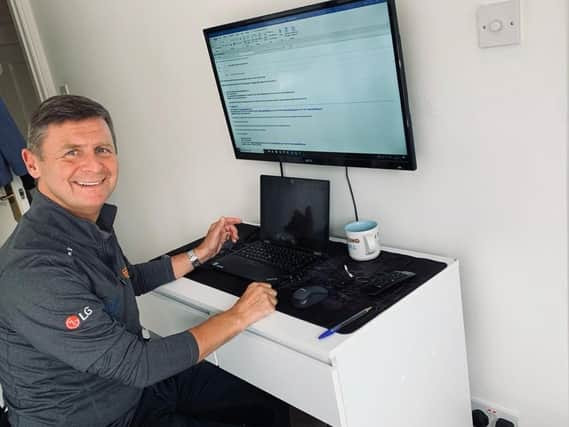Could Coronavirus leave a lasting legacy of home working?


ONS data suggests 41 per cent of workers are still currently working from home, down slightly from 49 per cent a few weeks ago. Pre-COVID-19 levels were around 12 per cent for people who had worked from home the previous week .
Meanwhile, 44 per cent of workers intend to ask their employer for permanent flexible working arrangements after the coronavirus restrictions are lifted, according to research by Direct Line Life Insurance.
Advertisement
Hide AdAdvertisement
Hide AdNikki Slowey, founder and co-director of Flexibility Works, who help organisations enable remote working, said: “The demand for flexible working was already outstripping supply here in Scotland and in particular the demand for home working had certainly not been met by employers.
“Then the coronavirus pandemic forced people out of their offices, and employers and employees have been discovering it’s possible to be just as productive working from home, if not more so. And there are added benefits, such as no travel time or costs, being able to walk the dog or exercise, completing household chores so they don’t pile up and spending more time with family.
“We’re hearing about a growing number of people who were highly sceptical about the benefits of home-working and now don’t want to go back to full-time office work.
“Business leaders are now looking at how people in their organisation will work going forward and realising that home working needs to be part of the picture. This doesn’t mean everyone working from home all of the time. There is still a huge role for a physical space, which allows us to connect with colleagues, but we will see a more blended approach to where and when people work.
“And remember, what we’ve been experiencing is not even ‘normal’ home working, as it happened so suddenly for so many people, not to mention the fact many of us have children at home. Just think what can be achieved if we embed flexible working properly as businesses re-set post COVID19.
“There are, of course, many challenges for organisations and workers because of the pandemic. But there is an opportunity to make some things better."
Stuart Dougal, a director at professional services firm KPMG based in Glasgow, said he had become a convert to home working and could now see the productivity benefits.
“Before the coronavirus I was always in the office Monday to Friday, and thought I’d be in a shirt and tie till I retired, he said.
"Now I’m working from home wearing a t-shirt every day.
Advertisement
Hide AdAdvertisement
Hide Ad“My job involves a lot of networking, usually seeing people face-to-face and sometimes entertaining clients in the evening too. I couldn’t see how that would be possible from home. But actually, the technology we have means I can still do all that networking, it’s just virtual. We even have virtual coffees or beers. I’ve adapted remarkably quickly and so have my colleagues.
“I’m able to get my job done just as well as I could before, which has been a huge surprise. Before COVID-19, I would have said there was absolutely no way I’d work from home. But now I would. Not all the time. But for some of it. The value of being able to shut the door and get on with research and other tasks without distraction is great."